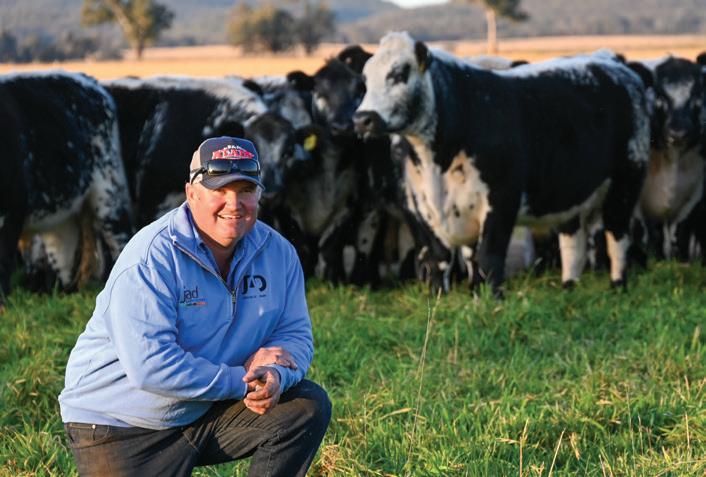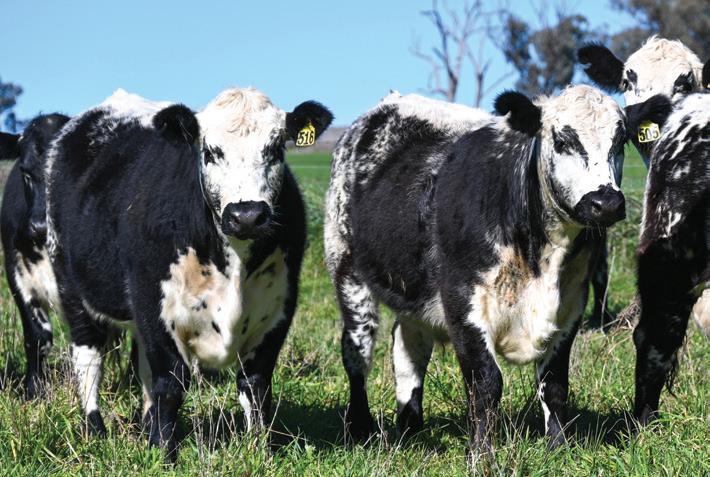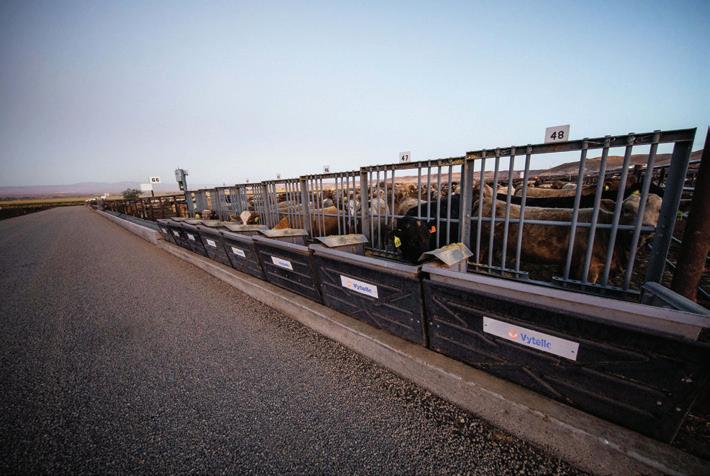
2 minute read
Trial Work for Breed Validation
It is no secret that we have a preference for basing decisions on facts and not opinion. This is why we measure our animals at every opportunity, and we are extending that R&D focus even further. Here is a snapshot of some of what we’ve been up to:
ONE TWO THREE
IN DECEMBER 2021, we purchased 97 x F1 Speckle Park/Angus steers, all sired by JAD bulls, from our South Australian clients, the James family, Lucindale. We grew out the steers, had them on display at our 2022 JAD Sale, and then continued them on grass-only through until the lead B Double load were processed by Coles Scone for their Graze brand in July. The March/April 2021drop steers averaged a touch over 530kg, with a top of 591kg, when they were processed at just 15-16 months old. They dressed at a bit over 57%. We then selected five steers from the tail and entered them in 2023 Beef Spectacular Feedback Trial. The team placed third out of 89 teams in the Carcase section.
We continue to purchase Speckle Park-cross steers from various vendors to background on grass and sell B Double loads into feedlots or direct to works. One such consignment was purchased in late-2021 by JBS, who fed and processed them, before being good enough to provide us with comprehensive data on how they performed. They had an average dead bar weight of 705kg, for an average dressed weight of 402kg, so a dressing percentage of 57%. After an average of 163 days on feed, they had an average marble score of 2.4, with a top score of 5. ALL still had their milk teeth when processed.
We announced in April that we had made a major investment into an eightnode Vytelle system for measuring feed efficiency. The infrastructure has arrived and is now waiting for a gap in traffic to be installed. At a cost of about $150,000 installed, we are the sixth Australian stud to make this investment, and the only Speckle Park stud.
Cattle of all breeds will eat variable amounts of feed per day. Depending on the breed, some may eat more, while others may eat less than their counterparts. Residual Feed Intake (RFI), or net feed efficiency, is defined as the difference between an animal’s actual feed intake and its expected feed requirements for maintenance and growth. Considerable variation in RFI exists among individuals within breeds or genetic strains. With a heritability of about 40%, we know with confidence that it will be passed on to progeny and can be used in parallel with other performance selection criteria. Selecting a desirable, low NFI is actually a risk-free factor in genetic selection, since it has little to no effect on progeny growth, frame size, mature size or carcase quality. The benefits of genetic selection in cattle for feed efficiency include:

▶ Reducing methane production by 30%
▶ Reducing feed intake by up to 12%
▶ Improving profitability in the feedlot
There is undeniably much focus around reducing the emissions of greenhouse gases (GHG). In the cattle industry, this is something that matters greatly, and something we can’t just avoid talking about. Ruminant production systems are known for emitting methane, which is a major GHG, and it is well-known that methane output is directly correlated to feed intake. If we can reduce these emissions, we can largely improve the carbon footprint of the beef industry.









